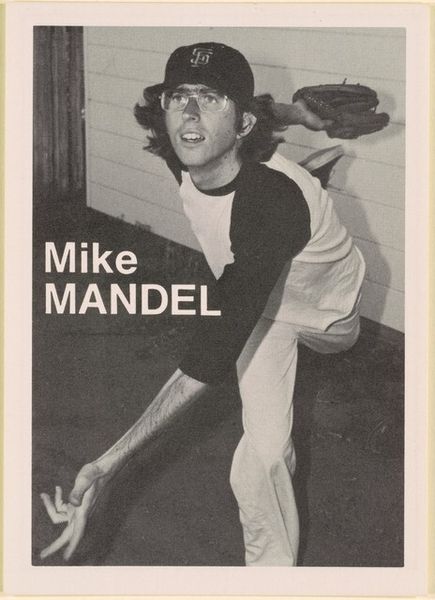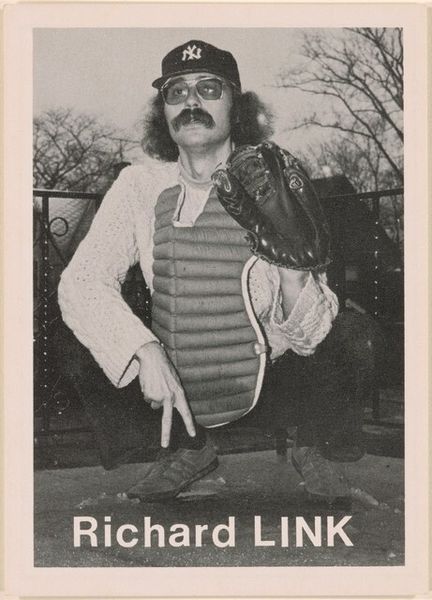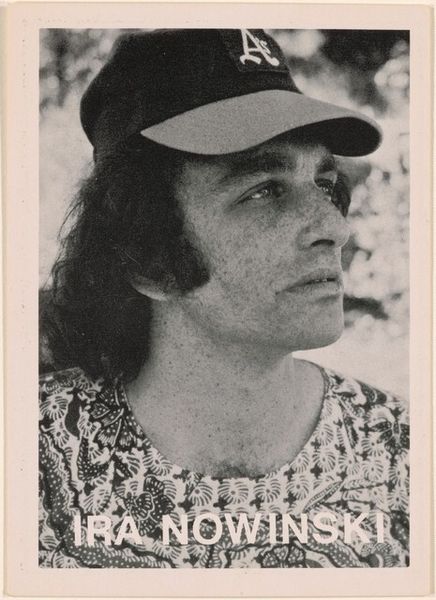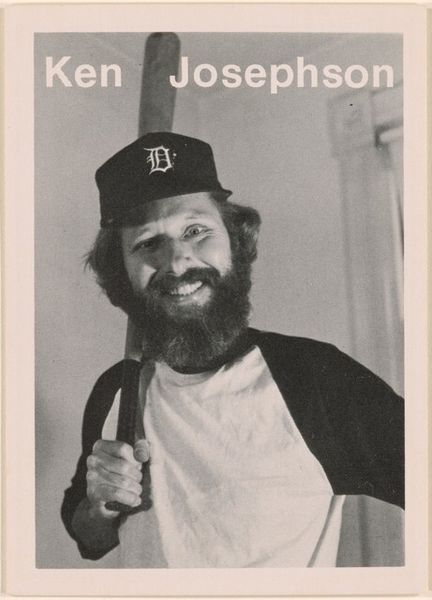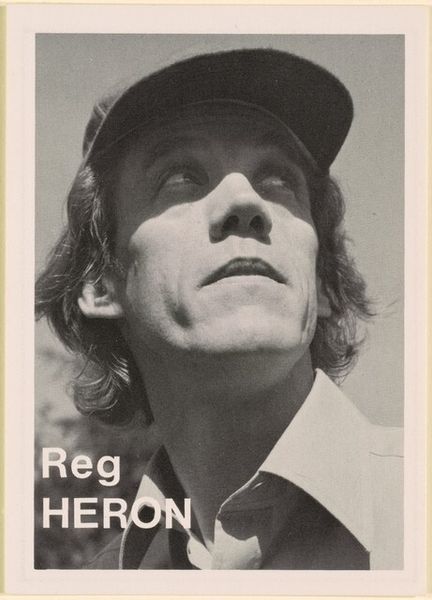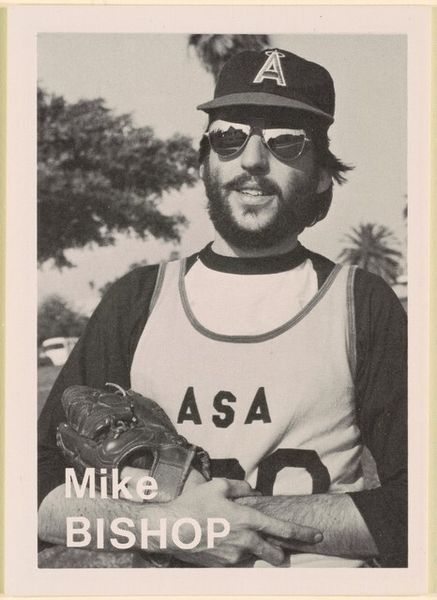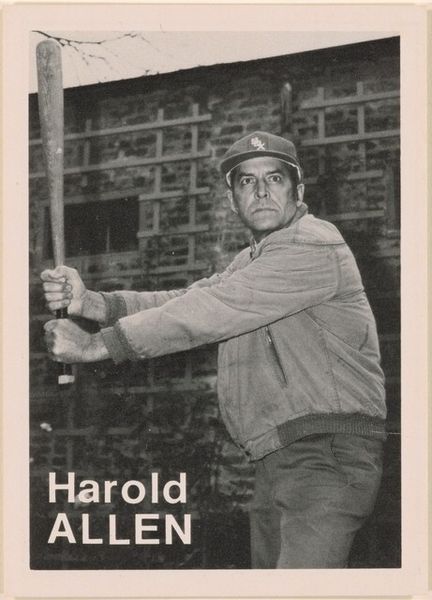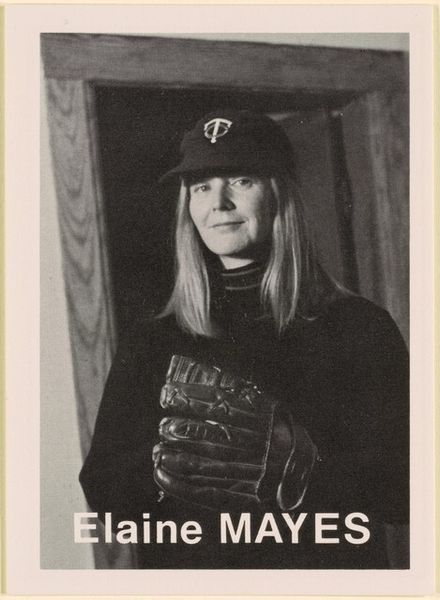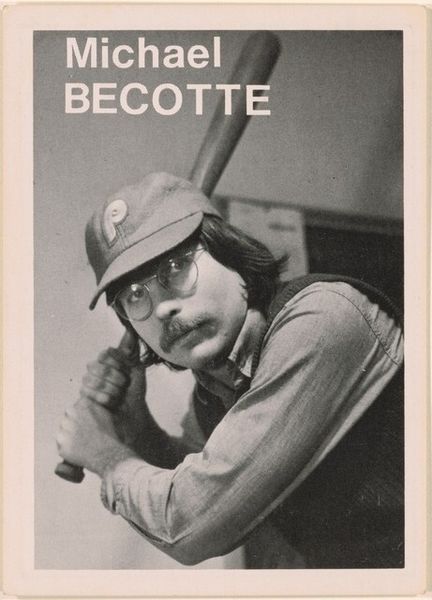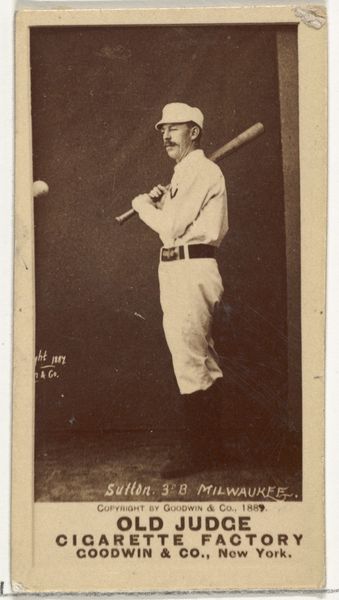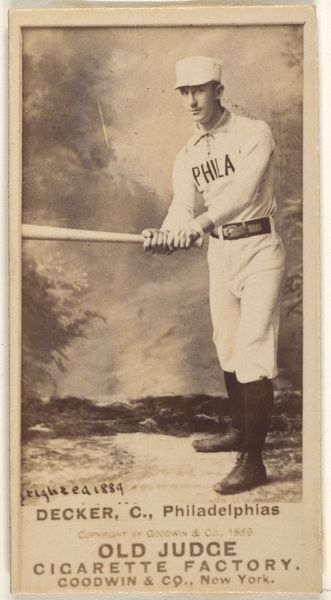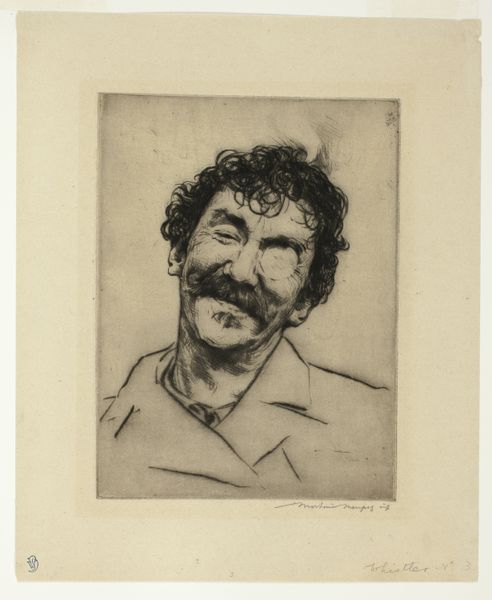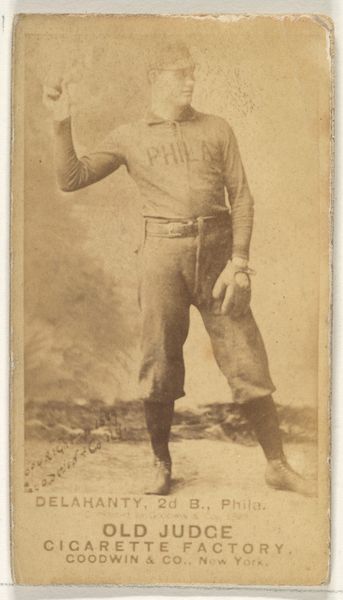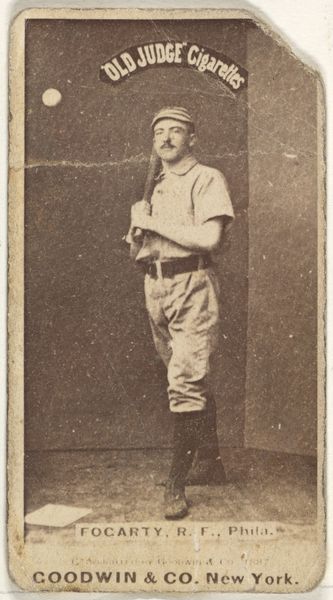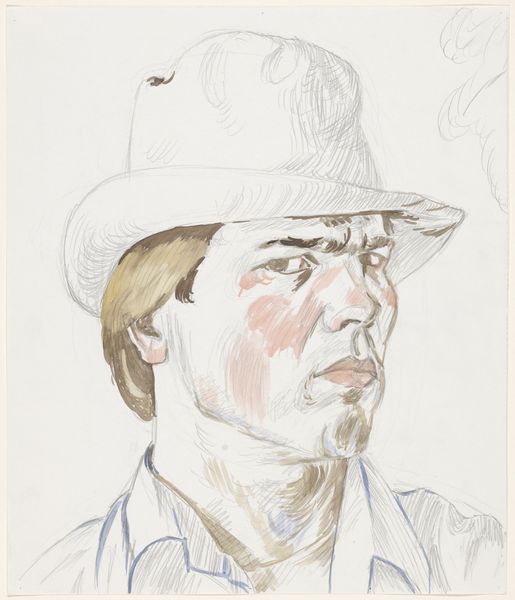
print, photography
portrait
photography
portrait reference
fine art portrait
Dimensions: image: 8 × 5.5 cm (3 1/8 × 2 3/16 in.) sheet: 8.9 × 6.3 cm (3 1/2 × 2 1/2 in.)
Copyright: National Gallery of Art: CC0 1.0
Curator: Here we have Mike Mandel's "Phil Perkis" from 1975, a black and white photographic print. What's your first impression? Editor: Stark. The high contrast and direct gaze certainly grab you. I'm immediately drawn to the geometric composition created by the severe angle of the neck and the flat plane of the cap. The framing is simple. Curator: Absolutely. Mandel’s work, particularly from this period, plays with vernacular photography, subverting the standard portrait. The New York Yankees cap, for instance, signifies not just baseball, but also broader social allegiances, masculinity, and even the concept of the working class hero in the 70's. Editor: I agree that it is loaded. Though, purely from a design aspect, observe how the curve of the cap’s brim is reflected by the mustache line. See the mirroring, the cap shielding his gaze, the mustache bracketing the mouth in an equal fashion, which creates a structured equilibrium. Curator: Precisely. The face is also off-center which leads into considering the background. How might this affect readings around power dynamics, considering how photographic portraits often reproduce existing social structures. The pose itself challenges the formality of traditional portraiture. The upward angle of his face also emphasizes a certain resilience and defiance. This wasn't merely documenting; it was engaging in the political landscape of the era. Editor: While I concede that social commentary may be inferred, I find the textures really fascinating; look closely at the different tones in the skin, the plaid of the shirt offset against the cap. A balance, perhaps even tension, occurs when we are caught up between form and reference. Curator: Yes, a tension emerges precisely because Mandel encourages us to look beyond the surface, beyond the purely formal elements, to consider the identity, the politics inherent in such a representation. We consider baseball but the baseball leads to wider networks. Editor: I appreciate that interpretation. I will carry that insight with me to other Mandel’s artworks I see. Curator: And I will remember to slow down a little when examining other artwork, looking closer at how form, framing, and texture work on a subconscious level. Thank you.
Comments
No comments
Be the first to comment and join the conversation on the ultimate creative platform.
